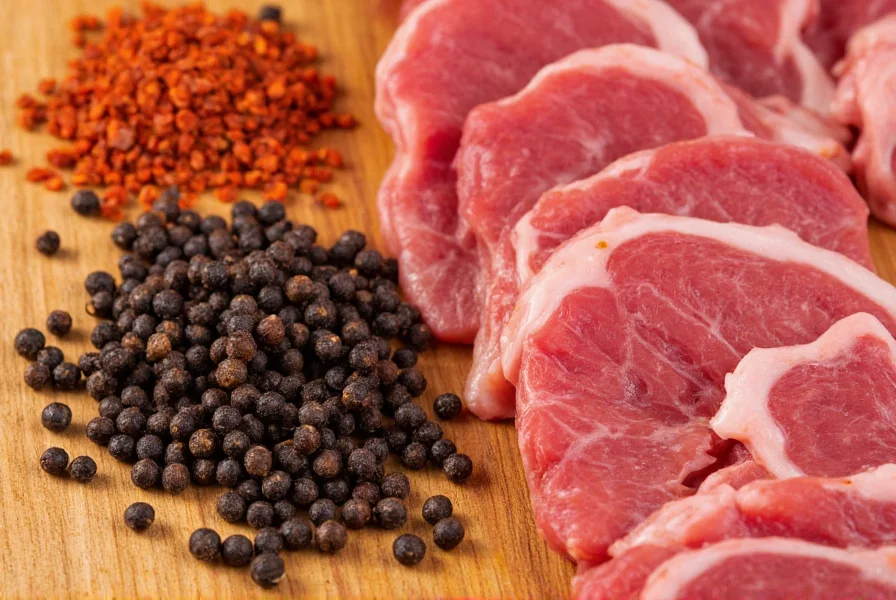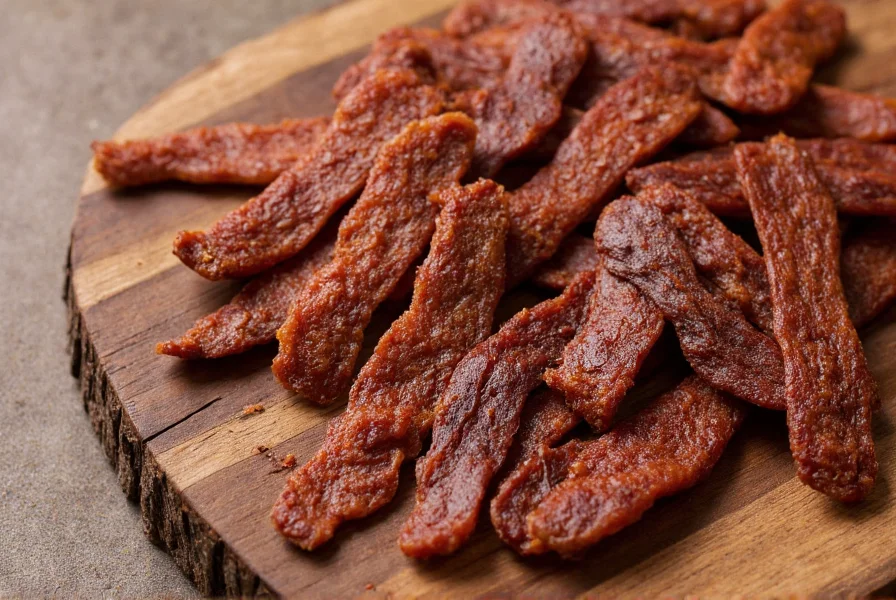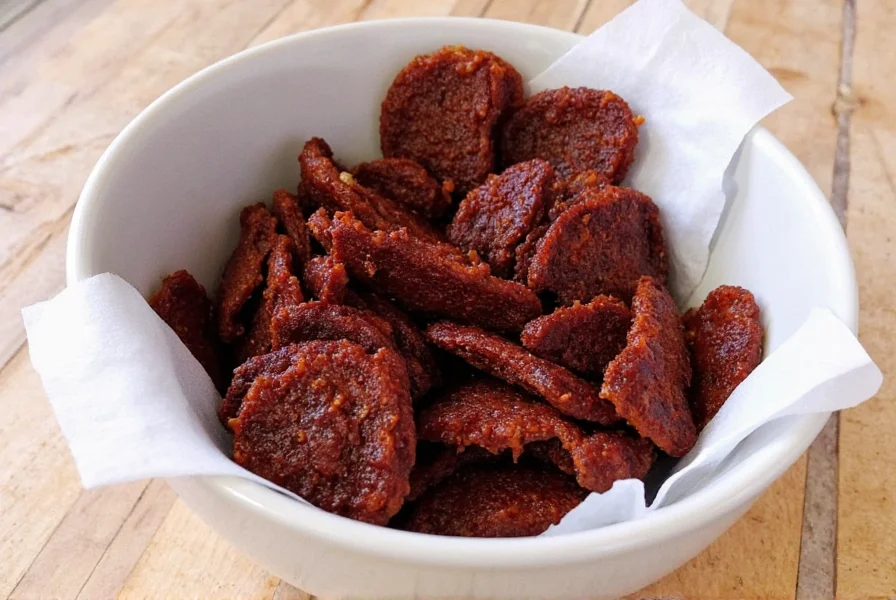Creating perfect homemade pepper jerky requires precision, quality ingredients, and understanding the science behind meat preservation. Unlike store-bought versions loaded with preservatives, crafting your own pepper jerky allows complete control over ingredients and spice levels while ensuring food safety throughout the process.
Why Homemade Pepper Jerky Outperforms Store-Bought
Commercial jerky often contains sodium nitrite, MSG, and excessive sugar to extend shelf life and enhance flavor. When you prepare homemade pepper jerky recipe yourself, you eliminate these additives while customizing heat levels to your preference. The process transforms affordable cuts of meat into a protein-rich snack that stays fresh for weeks when properly prepared.
Essential Ingredients for Perfect Pepper Jerky
The foundation of exceptional spicy pepper jerky recipe starts with selecting the right components:
| Ingredient | Purpose | Substitution Options |
|---|---|---|
| 2 lbs lean meat (top round or flank steak) | Low fat content prevents spoilage | Venison, turkey breast |
| 1/4 cup soy sauce | Provides salt and umami base | Coconut aminos (gluten-free) |
| 2 tbsp freshly cracked black pepper | Main flavor component | Peppercorn blend (Tellicherry, Szechuan) |
| 1 tsp red pepper flakes | Additional heat dimension | Cayenne powder, crushed Aleppo peppers |

Step-by-Step Preparation Process
Follow these precise steps for safe jerky preparation methods that meet food safety standards:
- Freeze and slice: Partially freeze meat for 2 hours, then cut against the grain into 1/4-inch thick strips
- Prepare marinade: Whisk together soy sauce, Worcestershire, black pepper, garlic powder, red pepper flakes, and liquid smoke
- Marinate properly: Submerge meat in marinade for 8-12 hours in refrigerator (never at room temperature)
- Pat dry: Remove excess marinade with paper towels to accelerate drying process
- Arrange for drying: Place strips on dehydrator trays without overlapping
Drying Methods Compared
Two reliable approaches exist for pepper jerky drying time control:
- Dehydrator method: Set to 160°F for 4-6 hours. Rotate trays hourly for even drying. Jerky is done when it cracks but doesn't snap when bent
- Oven method: Place meat on wire racks over baking sheets. Set oven to lowest setting (140-160°F) with door slightly ajar. Rotate pans every 30 minutes for 5-7 hours
Critical Food Safety Considerations
Improperly prepared jerky causes foodborne illness. Follow these safe jerky preparation methods:
- Always use a food thermometer to verify internal temperature reaches 160°F
- Never skip the marinating step in refrigerator (room temperature marination risks bacterial growth)
- Store finished jerky in airtight containers with oxygen absorbers
- Consume within 2 weeks at room temperature or freeze for up to 6 months
Flavor Variations to Elevate Your Recipe
Experiment with these different types of pepper jerky variations while maintaining safety standards:
- Smoky Chipotle: Replace red pepper flakes with 2 tbsp chipotle powder
- Sweet Heat: Add 2 tbsp maple syrup to marinade for balanced flavor
- Peppercorn Medley: Use equal parts black, white, green, and pink peppercorns
- Coffee-Infused: Substitute 1/4 cup cold brew concentrate for liquid smoke

Troubleshooting Common Issues
Resolve these frequent pepper jerky recipe challenges:
- Too tough: Over-dried - reduce drying time by 30-60 minutes next batch
- Too moist: Under-dried - return to dehydrator for additional 30-60 minutes
- Bland flavor: Increase pepper quantity by 50% or extend marinating time
- Meat spoilage: Always use fresh meat and maintain proper drying temperatures
Storage and Shelf Life Guidelines
Maximize freshness of your homemade pepper jerky with proper storage:
- Vacuum seal with oxygen absorbers for longest shelf life
- Store in airtight glass containers away from light
- Refrigerate for 2-3 month storage or freeze for 6+ months
- Always check for mold or off odors before consuming
Final Tips for Jerky Success
Mastering easy homemade jerky recipe techniques requires attention to detail. Always start with quality meat, maintain proper temperatures during preparation and drying, and never compromise on marinating time. The perfect pepper jerky should bend without breaking, have deep flavor penetration, and maintain a satisfying chew. With practice, you'll develop your signature blend that surpasses any commercial product while knowing exactly what goes into your snack.
How long should I marinate pepper jerky for optimal flavor?
For best results, marinate pepper jerky for 8-12 hours in the refrigerator. This allows sufficient time for flavors to penetrate while maintaining food safety. Never marinate longer than 24 hours as the acid in ingredients can begin to break down the meat texture.
Can I make pepper jerky without a dehydrator?
Yes, you can make pepper jerky using your oven. Place meat strips on wire racks over baking sheets, set oven to lowest temperature (140-160°F), and prop door open slightly with a wooden spoon. Rotate pans every 30 minutes for 5-7 hours until properly dried.
What's the ideal thickness for pepper jerky strips?
Cut meat into 1/4-inch thick strips against the grain for optimal drying and texture. Thicker strips won't dry evenly, while thinner strips may become too brittle. Partially freezing the meat for 2 hours makes slicing to consistent thickness much easier.
How do I know when pepper jerky is properly dried?
Properly dried pepper jerky should bend easily without cracking and feel leathery. When folded, it shouldn't snap but may develop a small crack. The internal temperature should reach 160°F, and it should feel dry to the touch with no moisture pockets.
Can I use different types of pepper in my jerky recipe?
Absolutely. Experiment with Tellicherry black peppercorns for floral notes, Szechuan peppercorns for citrusy heat, or a blend of different peppercorns. Freshly cracked pepper provides superior flavor compared to pre-ground varieties. Adjust quantities based on your heat tolerance and desired flavor profile.











 浙公网安备
33010002000092号
浙公网安备
33010002000092号 浙B2-20120091-4
浙B2-20120091-4